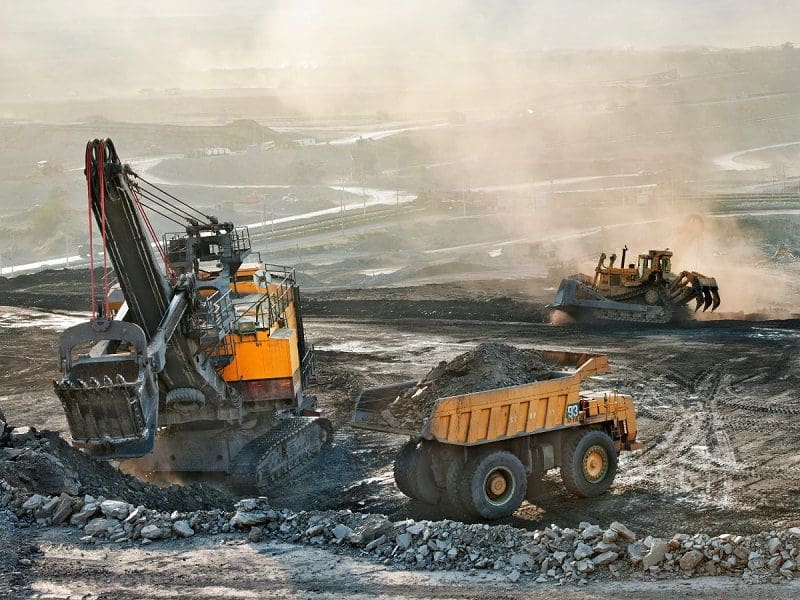Australia is known for its diversity of minerals and coal is one of the most prevalent. Coal is a sedimentary rock that is brown and black and is primarily used as a fuel source to create electricity. Due to its high amount of carbon and hydrocarbons, it releases a lot of energy when it is burned and is made from the remains of dead plants and animals which makes it a non-renewable energy source. In this article, you will discover eight facts about coal and Australia’s mining industry that you may not know about from iQ, the experts in mining news QLD.
There Are Four Types
Two are considered to be low-quality coal which are Lignite and Subbituminous coal. Lignite is the newest form of coal deposit and is used to generate electricity. Subbituminou coal burns cleaner than all other types of coal due to the millions of years of pressurization and therefore emits fewer greenhouse gases.
The other two are Bituminous coal which is darker in color and harder than Lignite and Subbituminous coal and is further divided into two types: thermal and metallurgical. Combined, this makes up 52% of the world’s coal supply and when Metallurgical coal is combined with iron ore, it makes steel. The last type of coal is Anthracite and this is the oldest, most mature type and therefore produces the largest amount of carbon and the lowest amount of volatile matter.
Judge a Coal By Its Color
The coal deposits in Australia range from 15 million to 225 million years old and the grading of coal is dependent on its mineral composition. An easy way to refer to coal’s quality is by its color and black coal (Anthracite and Bituminous) has greater than 70% carbon content whereas brown coal (Lignite) is typically around 60%-70%. Anything less than 60% carbon content could be considered to be a precursor such as Peat – another form of organic sediment.
Quality Not Just Quantity
Queensland coal (amongst Australian coal) is regarded as some of the highest quality coal globally. Due to its high quality, the countries that purchase this coal have to burn less to achieve the same outcome as other countries and therefore can be considered better for the environment. Currently, Australia makes up 6% of the world’s black coal however, Australia has the fourth-largest share of coal reserves and recoverable brown coal making it the highest ranked.
Less Processed Than You Think
Despite the various steps in the mining process to get coal from the ground to its end destination, when using coal for energy, black coal can be used without any processing at all. Part of the filtering process involved putting coal into large tanks and bathing them in specific liquids or chemicals which recovers the coal as it will float to the surface. After it has dried, it is generally crushed, refined and sorted to the requirements of the customer.
More Than Electricity
Coal is known for generating electricity and is a major component of the world’s energy supply but coal is also used as an important source for various chemical syntheses. When coal is heated it produces carbon and hydrocarbons and the hydrocarbons are used in the manufacturing of bricks, tiles, explosives, medicines, and hygiene products such as toothpaste, shampoo and soap. It can also be used in certain dialysis machines to purify the water and air and is also used to make carbon fiber which is a strong and lightweight material used for bikes, boats and tennis rackets.
Powering The Region Economically
Not only does coal keep the lights on but it also keeps food on the table for tens of thousands of Queenslanders and Australians. In 2018, the mining industry paid more than $290 million in wages to full time workers living in Queensland. Nationally, the mining industry creates $30.9 billion in wages and the royalties from mining companies contribute to services such as roads, transport, hospitals and schools. The global demand for coal and minerals, in general, remains strong, and with the drive to move to more renewable energy sources, there is great potential for Australia’s mining industry to pivot and remain relevant.
Higher Export Than Domestic Use
Australia produces around 555 million tonnes of coal each year (4th in the world) but only consumes about 130 million tonnes each year (10th in the world). This means that the surplus is exported to countries all over the world and is a very important part of Australia’s economy which is valued at $40 billion or 8% of the country’s GDP. With the current amount of coal being mined, it is estimated that Australia has around 1200 years’ worth of coal left.
Much like many of the minerals and resources that Australia mines, coal does have a finite amount and with the investment and interest in renewable energy solutions, coal will be around for many more years to come but to what extent, we do not know.






